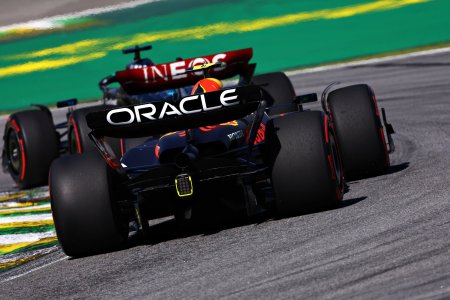In all fairness: Just because an F1 car produces more downforce than its own weight doesn't necessarily mean it will produce an equal amount of lift when turned upside down.
For one thing, I kind of doubt the blown diffuser would work as planned, given how perfectly calibrated the exhaust gases need to be.
Additionally, you would probably have to revisit the fuel tank, cooling, etc - everything that contains fluids. So I doubt you could just take a regular F1 car and run it up-side down, you'd have to make some adjustments first.
Nevertheless, the laws of physics obviously dictate this this can work if done correctly. F1 cars are basically inverted airplanes, so if you invert an F1 car you get...
For one thing, I kind of doubt the blown diffuser would work as planned, given how perfectly calibrated the exhaust gases need to be.
Additionally, you would probably have to revisit the fuel tank, cooling, etc - everything that contains fluids. So I doubt you could just take a regular F1 car and run it up-side down, you'd have to make some adjustments first.
Nevertheless, the laws of physics obviously dictate this this can work if done correctly. F1 cars are basically inverted airplanes, so if you invert an F1 car you get...












